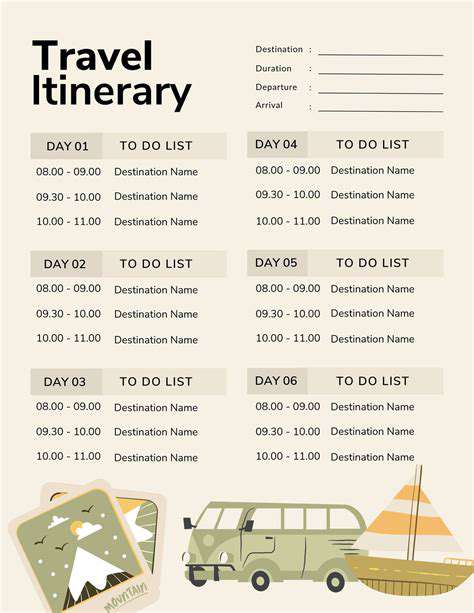Packing List for a Winter Trip [What to Wear]
Understanding the Layering System
Layering is crucial for staying comfortable and warm during winter trips. Instead of relying on a single, bulky garment, layering allows you to adjust your warmth throughout the day and in different weather conditions. Think of it like an onion – you can peel layers off as needed to cool down or add more to warm up. This system not only provides optimal temperature regulation but also helps prevent overheating, which can lead to discomfort and even illness.
A well-designed layering system includes base layers, mid-layers, and outer layers. Base layers are your first line of defense against the cold, often made of moisture-wicking materials to keep you dry. Mid-layers, like fleece jackets or sweaters, provide additional warmth and insulation. Outer layers, such as waterproof and windproof jackets, protect you from the elements and keep you dry in inclement weather, ensuring you can enjoy your trip regardless of the conditions.
Choosing the Right Fabrics for Winter
Selecting appropriate fabrics is vital for a successful winter wardrobe. Look for materials that are water-resistant, windproof, and breathable. Wool, for example, is an excellent insulator and naturally wicks away moisture, making it a fantastic choice for base layers. Fleece provides a good balance of warmth and breathability, perfect for mid-layers. Waterproof and windproof outer layers, often made of synthetic materials like nylon or Gore-Tex, are essential for protecting you from the elements and ensuring you stay dry and comfortable.
Consider the specific activities you'll be engaging in. If you'll be hiking, you might need a more breathable and lightweight jacket than if you're primarily exploring a city. Understanding the climate and potential weather changes is critical to selecting the right fabrics for each layer, ensuring your comfort and enjoyment throughout your trip.
Essential Winter Clothing Items
A comprehensive winter wardrobe includes more than just jackets and sweaters. Essential items like thermal underwear, hats, gloves, and scarves are often overlooked but are critical for staying warm. Thermal underwear, made of materials like merino wool, is a key component of the base layer system, providing warmth and moisture-wicking capabilities. A warm hat and gloves can significantly improve your comfort and prevent frostbite, especially in extremely cold temperatures. Don't underestimate the importance of a scarf for protecting your neck and face from the cold.
Consider packing versatile pieces that can be mixed and matched, such as a lightweight down vest or a waterproof shell jacket. These pieces can be layered with other items to adapt to changing weather conditions. Choosing versatile and functional clothing will make your winter trip more comfortable and enjoyable, allowing you to focus on exploring and experiencing the destination.
Comfort and Style: Choosing the Right Footwear
Choosing the Right Footwear for Comfort
When packing for a winter trip, choosing the right footwear is crucial for both comfort and safety. Consider the activities you'll be engaging in. If you're planning on lots of walking, hiking, or even just exploring, you'll need sturdy, insulated boots with good traction. These should be waterproof or water-resistant to keep your feet dry in snowy or icy conditions. Paying attention to the fit is paramount. Boots that are too tight can lead to blisters and discomfort, while those that are too loose can cause your feet to slip and potentially lead to injuries. A good rule of thumb is to try on the boots with the socks you'll be wearing during your trip to get an accurate fit.
Beyond practical considerations, think about style. While functionality is key, you can still maintain a fashionable look with your winter footwear. Look for boots with stylish details that complement your winter wardrobe. This could be a unique color, a specific boot style, or even some subtle embellishments. Consider the overall aesthetic of your outfit and choose footwear that enhances the look, ensuring you feel confident and stylish while staying warm and protected.
Insulation and Waterproofing: Essential Features
Insulation is vital for keeping your feet warm in frigid temperatures. Look for boots with high-quality insulation materials like fleece, down, or synthetic alternatives. These materials trap heat and help maintain a comfortable internal temperature, even in very cold conditions. The higher the insulation rating, the better protection you will have from the cold.
Waterproof or water-resistant materials are equally important. Water-resistant boots can keep your feet dry when exposed to light snow or slush, while waterproof boots are designed to withstand heavier precipitation and prolonged exposure to moisture. Waterlogged feet are not only uncomfortable but can also lead to hypothermia. Prioritize waterproof or water-resistant materials to keep your feet dry and safe during your winter adventure. Check reviews and look for specific details on the waterproofing capabilities of any boot you're considering.
Footwear for Specific Activities
The type of footwear you need will also depend on the activities you plan to do. If you're primarily planning on skiing or snowboarding, specialized snow boots are necessary for stability and ankle support. These boots will provide the necessary protection and support for navigating challenging terrain and maintaining balance. Consider the specific conditions of the ski resort or mountain you'll be visiting to ensure the footwear meets the necessary standards.
If you're planning on ice skating or snowshoeing, you'll need footwear that provides good traction and support. Ice skates require specialized boots that offer excellent support and grip on slippery surfaces. Snowshoes need boots with sufficient ankle support and stability, but also good traction for navigating snowy trails or paths. Knowing what you'll be doing dictates the type of footwear you should pack.
Comfort and Fit: Prioritizing Foot Health
Comfort is paramount when choosing winter footwear. Make sure the boots fit properly and provide adequate room for your toes. You should feel comfortable even after extended wear. When you try on boots, be sure to wear the thickest socks you intend to wear with them. This helps assess the fit and ensure there's enough room for your feet to expand slightly during the day without discomfort. Don't hesitate to try on several different styles and sizes to find the perfect fit for your feet. Properly fitting winter boots are essential for preventing blisters and other foot problems and guaranteeing a comfortable and enjoyable experience during your winter trip.
Consider the break-in period for new boots. New boots may feel stiff at first. Before your trip, take some time to break them in by wearing them around the house for short periods, gradually increasing the duration as the boots become more comfortable. This helps to avoid unexpected blisters or discomfort during your trip. This preparation will significantly contribute to a pleasant and safe winter experience.












